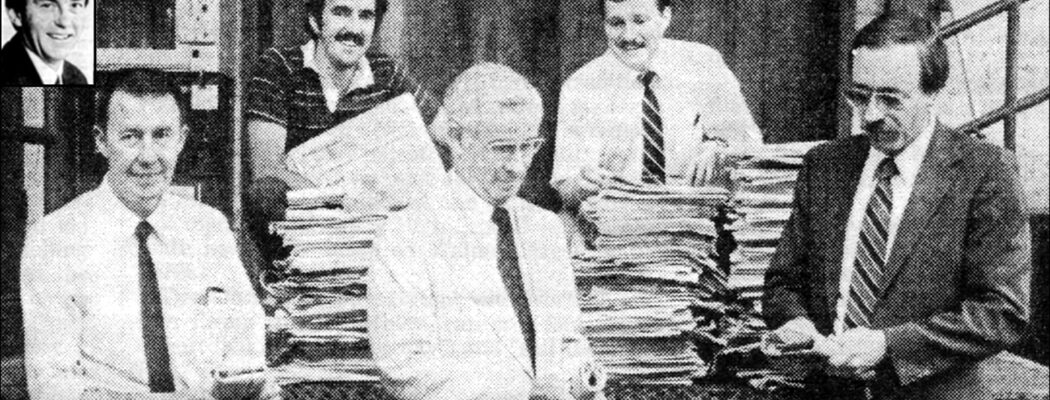On June 10, 1984, Alice Torbett, Johnson City Press-Chronicle feature writer, composed an article titled, “Five Decades of Newspaper Carriers.” It concerned the 50th anniversary of the newspaper, which began publication on June 12, 1934.
Independent businessmen at an early age may or may not have saved all the money they earned as paperboys, but they stored up something more important – memories and attitudes that spanned a lifetime.
Bill Spain, a former city recorder, started out in the 1930s at about 10 years of age as one of a half-dozen street salesman. “I would check out a number of papers,” he said, “and sell them around town. Around 1:30 or 2 p.m., there was a train that came into the old Clinchfield Depot and I went through it selling newspapers. I also did this on the Southern Depot.
“Workers at the old Appalachian Hospital let some of us go room-to-room selling papers. A couple of years later, I acquired a morning route, first in the Keystone section and then in the Southwest area. My newsboy career ultimately covered 10-12 years.”
Dr. Bob Bagby, a local dentist, started carrying papers in the Gump Addition in 1938. The paper cost 18 cents a week then and he said he could still accurately multiply by 18. He remembers getting tips and gifts at Christmas, as well as an annual handkerchief from the Millers on Holston Avenue.
Bob's twin brother, Bill, also had a route. It included many stores where he accepted food, namely Hershey candy bars and bananas in exchange for paper money. Bob remembers that their father teased Bill about literally “eating all the profits.”

Former Newsboys Remember Their Paper-Folding Techniques
From left are J.T. McPherson, Bill McPherson, Dr. Bob Bagby, Lee Talbert and Don Trevathan. George Langford is shown in the upper left corner insert.
J.T. McPherson collected money from his customers on Pine Street from the time he took the route in 1948. When he and Lucy Repass married, he started accepting Betty Crocker coupons that the couple saved to acquire silverware. The paper route was a staple in their courtship. If they needed money for a movie date, J.T. usually found a customer who was in arrears and collected enough cash to pay for the tickets.
Carrying papers also became a family tradition for the four McPherson offspring. Once they received a $100 bill, a sizable amount of money in those days. Not having enough change, three of them “ran around like lightening” to round up enough money from customers so they could keep the bill, at least for a few hours.
In 1953, George Langford took “Route #1,” which was the downtown beat that included several apartments as well as many stores. It began at the newspaper building on W. Main and ended at the Dixie Restaurant on E. Main. He used his profits to buy a collie puppy that lived with the family for 17 years.
Don Trevathan loaded up the basket of his bike with so many papers that he could barely steer it. His route starting point was Bailey & Son Grocery on Earnest Street where he began his route. He earned enough money to buy a 35mm camera, and, at the same time, gained some first-rate business experience.
Lee Talbert, current Press Photo Editor, was a skinny 13- year-old when he got his first route. It was a challenging one, mainly because his delivery area was around Knob Creek Road, where subdivisions were just beginning to develop with many vacant lots. “I didn't mind getting up in the morning,” he said, “and I didn't mind bad weather. Delivering papers on Christmas night offered an exciting change of routine. However, the two things I didn't like were dogs and collecting.”
Traffic was not a problem for Paige and David Preston, who shared a northern Johnson City route. Their papers were delivered right to their home on Quail Drive, thus keeping them off traffic-congested Mountcastle Drive.
Newspaper delivery boys represented the kind of energetic, ambitious youngsters that made the daily paper one of the few remaining home-delivered products and a proud American institution.
